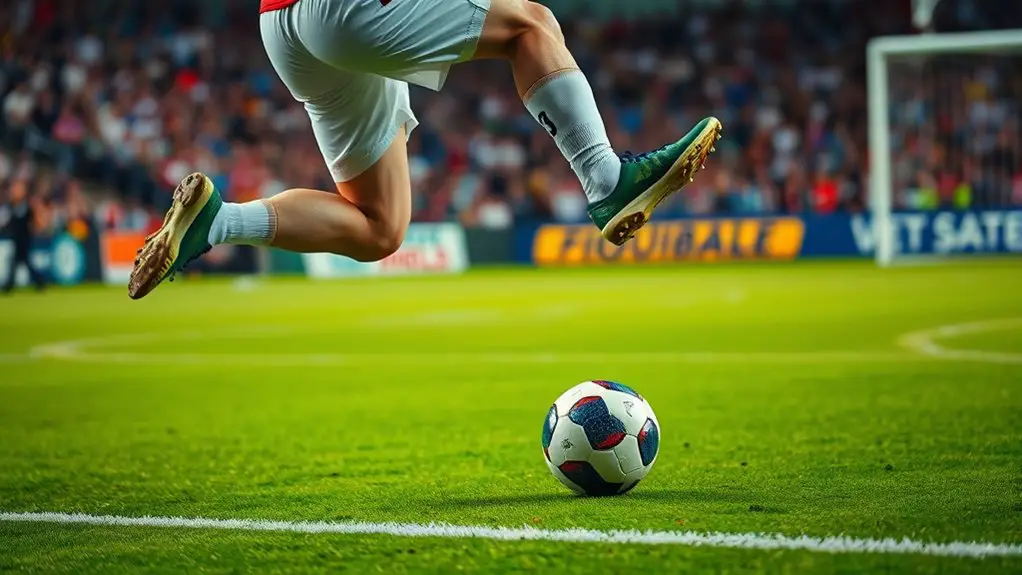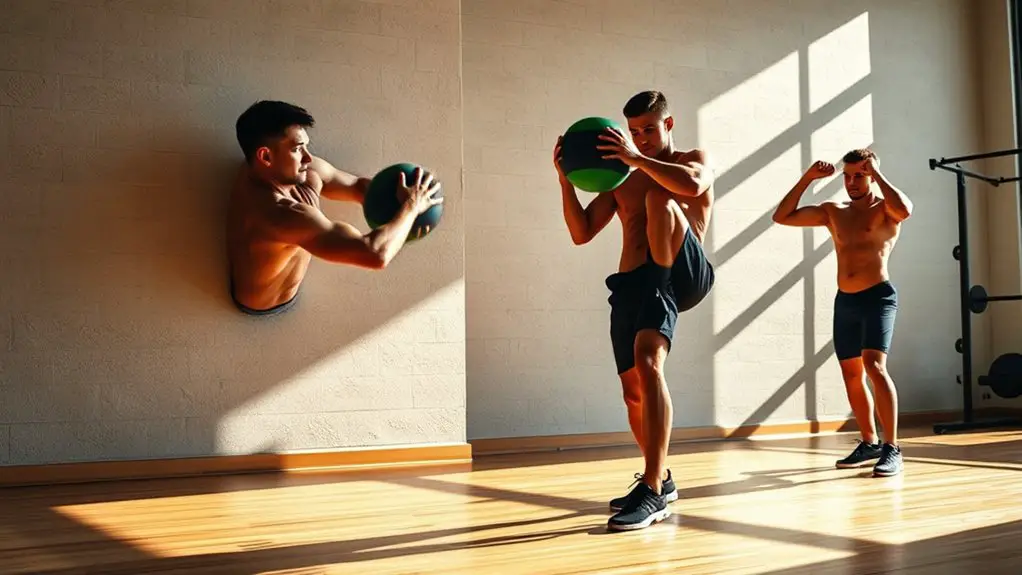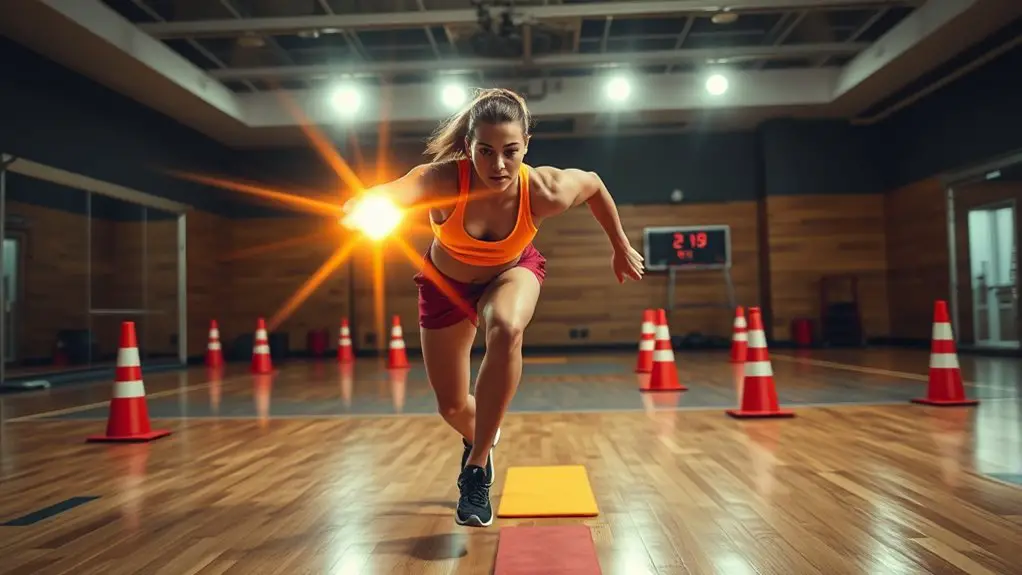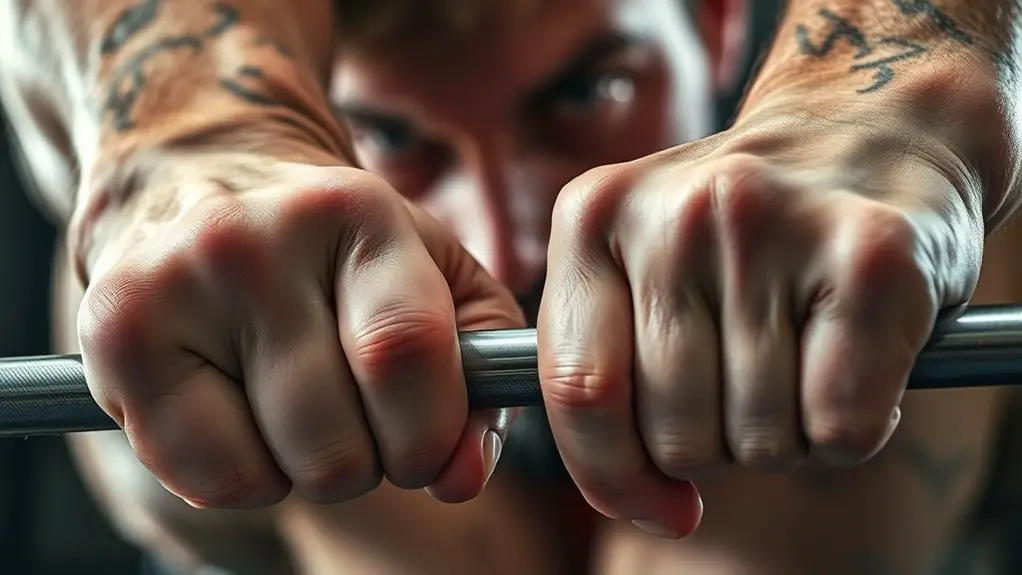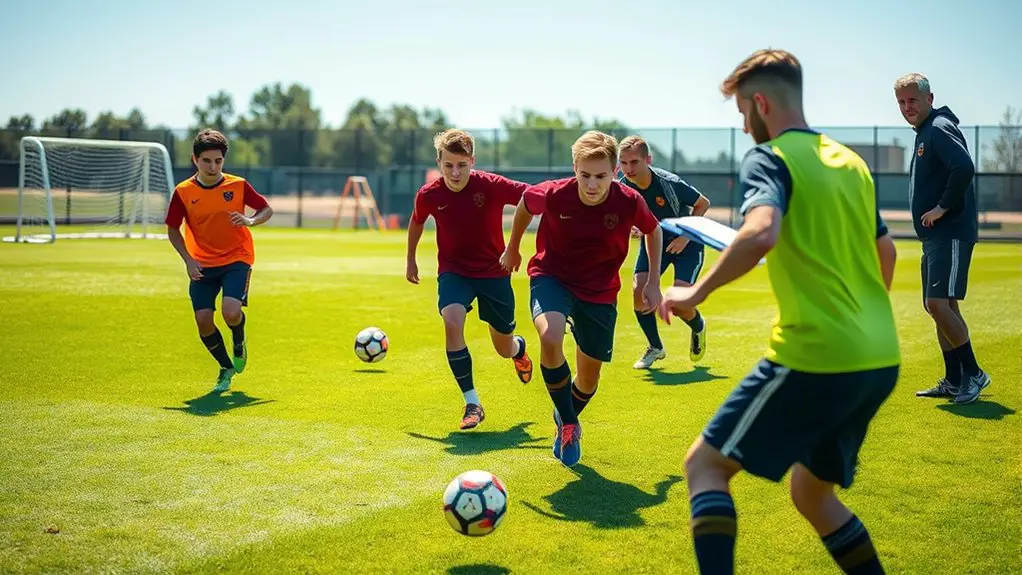To perfect your free kick technique, start with your setup. Position your non-kicking foot 6-8 inches from the ball, aligned with your target. Focus on body alignment and strong torso rotation to generate power through hip movement. Full leg extension and a balanced follow-through enhance accuracy and shot distance. Mastering these mechanics not only improves your kicks but also allows for creativity in strikes. There's more to discover about the nuances of this technique.
Understanding the Free Kick Setup
When you're setting up for a free kick, there are a few key elements to keep in mind. First, consider the kick distance. You'll want to gauge how far you are from the goal, as this will influence your approach and technique. If you're too far out, you may need to adjust your strategy accordingly.
Next, think about angle adjustment. The position of the wall and the goalie's stance can provide valuable information on how to direct your kick. By adjusting your angle, you can create a path that makes it harder for the keeper to respond. Additionally, enhancing your footwork training can significantly improve your ability to execute a precise and powerful free kick.
Body Positioning for Optimal Performance
Achieving the perfect free kick requires proper body positioning to maximize your effectiveness. Your body alignment plays a vital role in how well you strike the ball. Stand with your non-kicking foot planted firmly next to the ball, creating a stable base. This alignment keeps your body balanced and ready for action. As you prepare to kick, focus on your torso rotation. A smooth, controlled rotation will help generate power and accuracy in your shot. Additionally, incorporating agility training techniques can enhance your overall performance by improving your ability to maneuver effectively during game situations.
The Importance of Foot Placement
Foot placement is essential for executing a successful free kick. When you position your non-kicking foot, you're setting the stage for the entire kick. The foot orientation needs to be precise, as it directly influences the strike angle of the ball. Aim to plant your non-kicking foot about 6-8 inches away from the ball, aligned with your target. This alignment helps you maintain balance and control.
Your kicking foot should swing through with purpose, but it's the placement of your non-kicking foot that stabilizes your body. If your foot's pointed too far inward or outward, it could lead to a misdirected shot. Remember, the right foot placement not only enhances your accuracy but also gives you the freedom to express your unique style. So, take a moment to focus on where you place that foot—it could be the difference between a goal and a miss.
Generating Power Through Leg Mechanics
Mastering the mechanics of your legs is essential for generating power in your free kick. It all starts with leg extension; as you prepare to strike the ball, you need to fully extend your kicking leg. This action not only increases the distance but also enhances the force you can apply.
Next, focus on hip rotation. As you initiate your kick, your hips should rotate powerfully, driving your leg forward. This rotation helps transfer energy from your core down to your kicking foot, giving you the freedom to release that perfect strike.
Mastering the Follow-Through
Mastering the follow-through is essential for achieving balance and accuracy in your free kick. It's not just about how you strike the ball; how you finish your shot can make all the difference. By focusing on your follow-through, you'll improve both your shot's precision and your overall stability.
Importance of Balance
While many players focus on striking the ball correctly, achieving balance during the follow-through is equally essential for a perfect free kick. Without proper balance, your kick might lack power and precision. Incorporating balance drills and stability exercises into your training can greatly enhance your follow-through.
Here's how you can visualize the importance of balance:
| Balance Drills | Stability Exercises | Benefits |
|---|---|---|
| One-leg stand | Stability ball squats | Improves muscle control |
| Lateral lunges | Bosu ball exercises | Enhances core strength |
| Single-leg deadlifts | Plank variations | Boosts overall stability |
| Heel-to-toe walk | Resistance band workouts | Increases coordination |
Mastering your balance not only improves your technique but also gives you the freedom to release your full potential.
Impact on Accuracy
Achieving a precise follow-through is essential for improving your free kick accuracy. It's not just about striking the ball; it's about how you finish that kick. A well-executed follow-through aligns your body mechanics, helping control the ball's direction and speed. You'll notice that accuracy factors like body position and foot placement come into play here. By incorporating precision training into your practice sessions, you can fine-tune your technique and enhance your ability to place the ball exactly where you want it. Remember, it's all about consistency. The more you focus on mastering your follow-through, the more freedom you'll feel in your shots, allowing your skills to shine on the pitch. Keep practicing, and watch your accuracy soar!
Analyzing the Curve and Dip of the Ball
When it comes to free kicks, understanding the curve and dip of the ball is essential for any aspiring player. The ball's trajectory is influenced by several spin factors that you can master to elevate your game. Here's what to reflect upon:
- Ball placement: Where you strike the ball affects its curve.
- Foot angle: The angle of your foot at impact determines the initial spin.
- Follow-through technique: A smooth follow-through enhances the dip.
- Wind conditions: Be aware of how wind can alter the ball's path.
- Surface contact: Different surfaces can affect the ball's roll and bounce.
Practicing Techniques for Consistency
Mastering the curve and dip of the ball is just the beginning; practicing your techniques for consistency is where you'll truly elevate your free kick skills. To harness your freedom on the pitch, embrace repetitive drills that help engrain the perfect form into muscle memory. These aren't just mindless repetitions; they're essential for building confidence and precision.
Incorporating mental visualization can also be a game-changer. Picture each kick flowing seamlessly, the ball soaring through the air just as you want it to. This mental practice complements your physical efforts, reinforcing the connection between mind and body. Additionally, practicing mindfulness in athletic performance can enhance your focus and decision-making on the field.
Make a commitment to practice regularly, focusing on the same spot on the goal. Each kick should feel deliberate, allowing you to express your style while maintaining control. With dedication to these techniques, you'll find your free kicks transforming into powerful, consistent strikes that reflect your true potential.
Frequently Asked Questions
What Mental Strategies Help Improve Free Kick Performance?
To improve your free kick performance, mental strategies are key. Try using visualization techniques to picture the perfect shot before you take it. Imagine the ball soaring into the net, focusing on every detail. Additionally, engage in focus training to sharpen your concentration in high-pressure moments. By honing these skills, you'll feel more confident and free when stepping up to take that vital kick, turning pressure into opportunity.
How Does Weather Affect Free Kick Execution?
When it comes to free kicks, it's like trying to hit a moving target. Weather can throw a wrench in your plans. Wind resistance can alter the ball's trajectory, making it tougher to predict where it'll land. Plus, rain conditions can create a slippery surface, affecting your footing and control. You've gotta adapt your technique to the elements, keeping your cool to guarantee your kick still finds its mark, no matter what.
Can Player Fatigue Impact Free Kick Accuracy?
Yes, player fatigue can definitely impact your free kick accuracy. As you tire, the fatigue effects kick in, leading to a decline in precision and power. Your muscles may not respond as effectively, making it harder to execute that perfect strike. Plus, mental fatigue can cloud your judgment, causing you to misjudge distances or angles. So, staying fit and managing energy levels is vital for maintaining your accuracy during those critical moments in the game.
What Equipment Is Best for Practicing Free Kicks?
When it comes to practicing free kicks, having the right equipment can make a huge difference. You'll want to invest in high-quality practice balls that simulate match conditions, helping you master your technique. Training aids like rebound nets or goal targets can also enhance your training sessions by providing instant feedback. With these tools, you can practice freely, allowing your skills to flourish and your accuracy to improve over time. Enjoy the journey!
How Do Different Playing Surfaces Influence Free Kick Technique?
Different playing surfaces can really change your free kick technique. On grass, the texture can affect how the ball rolls and your footing, giving you a more natural feel. Meanwhile, turf friction can make the ball react differently, often leading to quicker spins or bounces. If you want to master your kicks, you'll need to adapt your approach based on the surface, embracing each unique challenge it presents.
